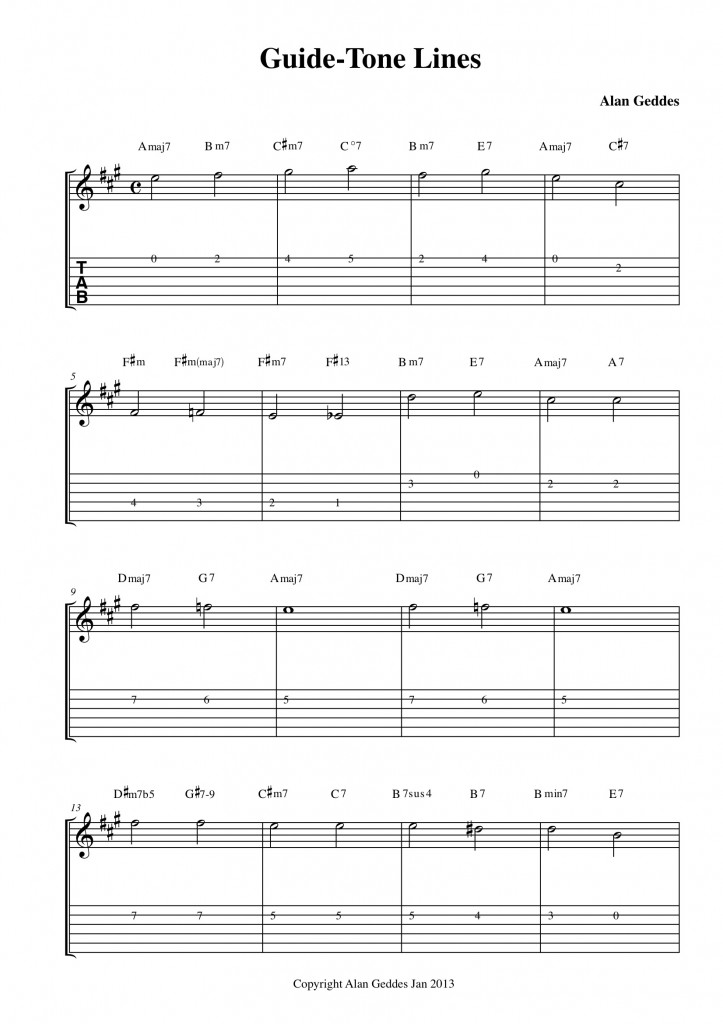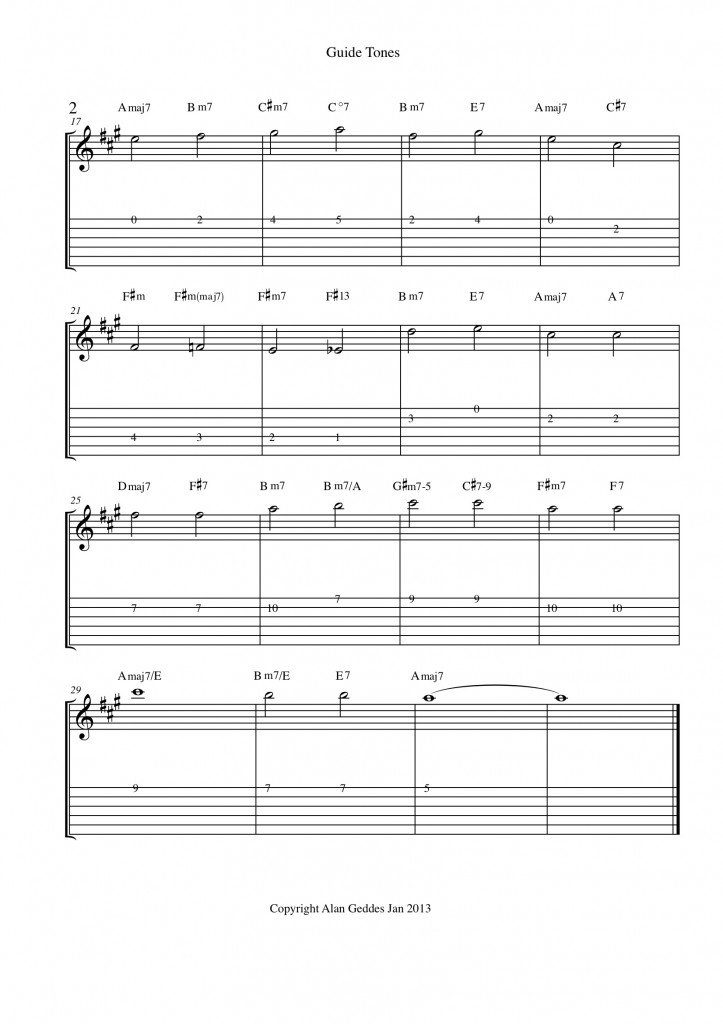Learning how to improvise is an ambition of many guitarists and while it may seem at the outset a very difficult thing to achieve there are approaches to the subject that will help you get started. One of these is guide-tone lines.
In the attached guitar video I’m creating guide-tone lines for fingerstyle guitar over standard chord progression movements which I then go onto embellish. A guide-tone line is a melodic line which comprises of tones from the chords of the chord progression being followed. True guide-tone lines only use the 3rd and 7th of the chord but more sophisticated lines will make use of all of the chord tones.
One of the hardest things about improvisation is that it often takes place within a certain structure, for example a pre-determined chord progression. This can be harder to tackle than “free improvisation” where there is no pre-determed structure. By identifying melodic lines within a pre-determined chord progression you will start to identify possible motifs that could be developed. It’s also a good practice for developing your song writing skills. You’ll notice from the attached notation that the lines I’m identifying are not necessarily the top lines, in measures 5&6 the guide tone line is an internal line. In the attached video I’m using various ideas to develop the guide tone lines………….for a later blog.
If you want to try and add some of your own accompanyment to the lines in the attached notation, try play the odd root note from the chords. You don’t have to play everyone, just enough to support the guide-tone line which should already be implying the harmony.

